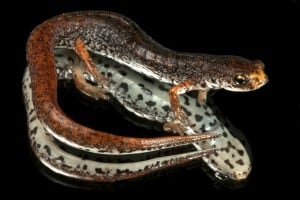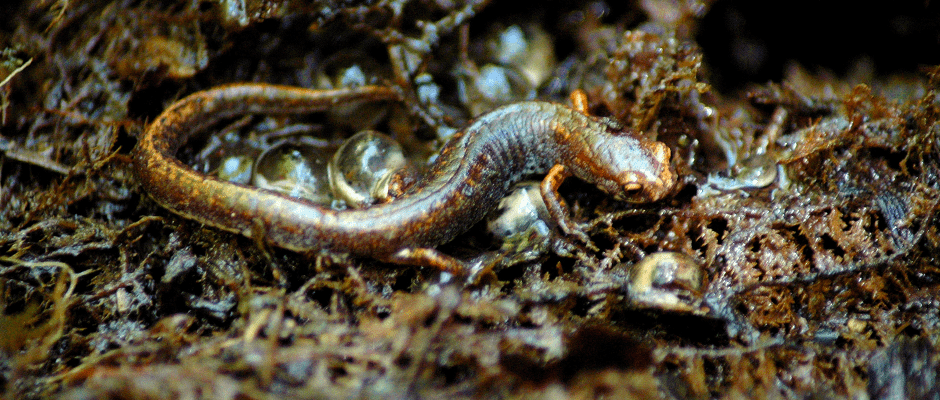Share this article
North Carolina: Home of Salamanders and TWS 2016
“North Carolina.”
When you hear the words, what comes to mind? Basketball? Barbeque? Beaches and mountains? And, for TWS 2015 attendees, Sir Walter Raleigh and lemurs? While these things may be characteristic of the Ol’ North State, one thing that ought to pop in your head is “Salamanders!”
In case you’ve been under a rock lately and haven’t heard, the Southern Appalachian Mountain region and North Carolina in particular, ranks #1 in the world for salamander diversity. Did you know that we have at least 65 salamander species in the state and at least 50 in Western North Carolina alone?
If you’ve already seen the TWS 2016 save-the-date card, you may be curious about the attractive little salamander featured on the front. The Four-toed Salamander (Hemidactylium scutatum) lives up to its name as the only terrestrial salamander with just four toes on the back feet (five toes are the norm). With its slightly “smushed-in” snout, a conspicuous constriction at the base of the tail, a wonderful, terra cotta, reddish-orange color, and a porcelain-white belly with bold, black spots, the four-toed salamander is a unique member of our native salamander community and a part of the rich natural history of our state. Found in mossy floodplains, bogs, vernal pools, and other wetlands, this 2-4 inch sized amphibian is particularly picky about its choice of nesting habitat. Females prefer to embed their tiny marbles of eggs on mossy logs over water or in moss at the base of trees adjacent to water. Hatchlings then plop right out of the nest and into standing water, vital for their survival since they hatch with gills.

A porcelain-white belly with bold, black spots is a unique feature of the Four-toed Salamander (Hemidactylium scutatum). Image Credit: Todd Pierson
The only member of its genus, four-toed salamanders are patchily distributed in the Eastern United States and a few parts of Canada. One of the lungless salamanders in the family Plethodontidae, these and other plethodontid salamanders essentially breathe through their skin, distinguishing them as indicators of environmental quality or bio-indicators. Wetland habitat loss and degradation is the primary threat to the species, although emerging amphibian pathogens may also pose serious risks. In North Carolina, the four-toed salamander is a State Special Concern Species, protected from harm or collection.
We invite you to learn about the many salamanders and other wildlife that make North Carolina one of the top ten states for biodiversity. Make your plans now to join us in Raleigh, October 15-19, for TWS 2016!
Header Image: A female Four-toed Salamander (Hemidactylium scutatum) broods her egg clutch in a mossy nest. Image Credit: Jonathan Mays








